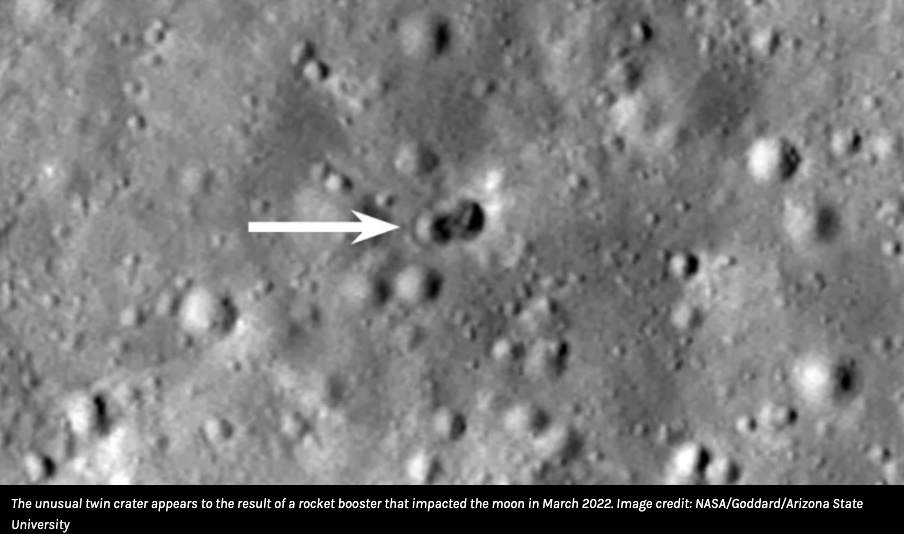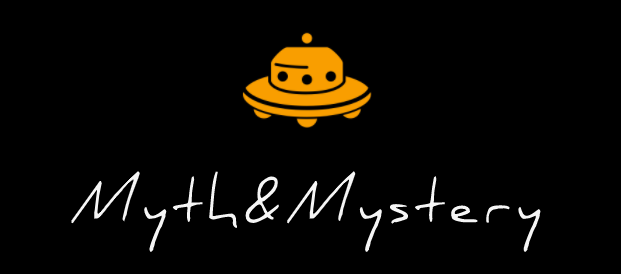After an item struck the lunar surface earlier this year, a peculiar twin crater was discovered. The exact identify of the rocket that collided with the stony surface to create the twin crater is still unknown, according to NASA.
The photos were taken by NASA’s Lunar Reconnaissance Orbiter close to the northeast rim of the Hertzsprung basin, a massive impact crater on the far side of the Moon that measures 536 kilometers (333 miles) in width.
On March 4, 2022, two overlapping craters were formed: an eastern crater measuring about 18 meters (59 feet) in diameter and a western crater measuring about 16 meters (52 feet). Since they resemble just a handful previous rocket body impacts that have left the Moon scarred in the past, the dual nature of the craters is intriguing.
In the 1970s, fragments of Saturn V rockets used in the Apollo 13, 14, 15, and 17 missions crashed on the Moon, although these impacts only left a single, roughly circular crater. This is because expended rockets strike the earth vertically since the majority of their mass is concentrated at the motor end and the remainder of the rocket is primarily simply an empty fuel tank.

The unexpected twin crater found close to the Hertzsprung basin shows the rocket body had substantial masses at both ends and crashed horizontally on the Moon.
The Chang’e 5-T1 robotic spacecraft, which China dispatched to the Moon in 2014, is thought to be responsible for the odd craters.
Bill Gray, a creator of astronomy software, forecast that a defunct rocket booster would strike the lunar surface in March earlier this year. Later evidence led to the conclusion that it was a booster from the Chang’e 5-T1 lunar mission, despite early suspicions that it was from a SpaceX Falcon 9 rocket.
Gray said in a recent blog post that the creator’s position neatly fits up with his projections of where the Chinese booster was anticipated to fall, while he admitted that the peculiar shape of the twin crater is also perplexing him.

I’m a little perplexed by this, writes Gray. I am not an expert on what occurs in high-speed crashes like these, but I do know that they can have extremely odd, counterintuitive outcomes.
There has been speculation that if this impact had occurred at a shallow angle, it may have produced an extended or double crater, which does occasionally occur and explains several elongated/double lunar craters. However, the Chang’e 5-T1 booster landed at an angle of around 15 degrees. So it doesn’t account for this one,” he said.
China’s Foreign Ministry, on the other hand, has previously disputed that the booster traveling towards the Moon was from their Chang’e-5 rocket, asserting that the rocket returned to Earth and exploded during re-entry.
Although NASA hasn’t commented on what it believes caused the twin crater to form, there is no question that certain theories are being discussed among its experts.































